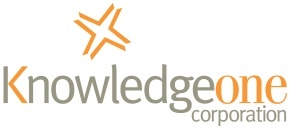How to use MFDs with RecFind 6
RecFind 6 provides multiple options:
Option 1: Using the TWAIN driver
If your MFD is supplied with a TWAIN driver, installing this on your workstation will allow you to scan from your MFD in to RecFind 6.
While it will be dependent on how your MFD operates, generally the scanning process is split into two steps.
You first use the MFD to scan to a temporary holding area located on the MFD. Then, from within RecFind 6 (Scan function) on your workstation, you use the TWAIN interface to retrieve the document from that temporary holding area.
There is no need for you to have exclusive access to the MFD for the entire scanning process. You can scan several documents in to the holding area, then at a later time use RecFind 6 to scan these documents into your system.
RecFind 6 provides you with the option to store your scanned documents in a variety of formats (e.g. TIFF, PDF, PDF/A) and optionally OCR the document (if using PDF or PDF/A). OCR’ing the document will allow you to search on the document text, as well as any metadata you store in RecFind 6.
Option 2: Scanning to a network share
If your MFD can save scanned documents to a network share, you can add these electronic documents in to RecFind 6. These files can be on any type (e.g. TIFF, PDF, etc.)..
Note: If your MFD can email you the scanned document, you can also save the document from the e-mail on to your hard drive and use these same functions..
We provide a range of different ways of adding an electronic document in to RecFind 6 depending on the RecFind 6 add-on components you are licensed for. Options include:.
- Using the RecFind 6 smart-client - normal Scan function or Bulk Import function.
- Using the RecFind 6 web-client (via Internet Explorer only) - normal Scan function or Bulk Import function.
- Using the RecFind 6 Button application.
- Using the Xchange import tool, to import data from CSV and XML files. This can also be scheduled to run periodically.
- Using RecScan, which can optionally extract metadata from an accompanying XML file.
- Using RecCapture, to automatically capture files stored in specified folders as soon as they are created. Different “rules” can be specified for each different folder.
Linking captured documents.
Using a RecFind 6 database trigger (created within the DRM), you can also optionally interrogate the filename (and path) of the documents as they are added to RecFind 6 to control how the files are stored. For example, you could extract an ID (e.g. a member number) from the file name of the document, so if the MFD had a way of prompting the user for the filename (where they would enter the member number) this would allow you to link the document automatically. .
Questions? If you have any questions please contact the support department and we'll be more than happy to help.
